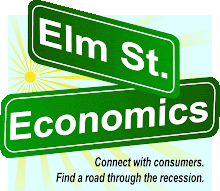When you’re doing business with someone, how would you like to be contacted?
A recent Ipsos/Habeus study indicates that 67% of consumers prefer email, compared to only 29% who prefer the phone. (The study, published by the Center for Media Research, is definitely worth a read.)
I, for one, am not surprised by that statistic. For years, consumers have known the frustration of wasting precious time navigating a phone tree when calling a company for help… or getting solicitation calls from vendors during dinner. With a reputation for time savings, it makes sense that email and other alternate forms of digital contact are gaining ground, in terms of the way consumers like to communicate with their providers. People can sort, prioritize, act on—or delete—the message quickly. They have greater control over the communications process. And filtering software or services can help protect them from unwanted advances.
Implications: Telephones did not annoy consumers, businesses did. A wise company will keep that in mind as they decide how email, text messaging, and other new digital tools should be used. The goal is to empower the consumer, and facilitate the communication they want, when they want it. Digital messaging should reduce the number of steps required in the consumer’s search for help, not aggravate the process. It is not enough to simply migrate more of your corporate communications into a digital platform because that is what consumers prefer; you have to ask why they prefer it… lest you become a member of their “blocked senders” list.
Also, you must accept that one or two distribution platforms are not enough. In a world of email, text messaging, web sites, RSS feeds—and yes, even phone calls—no single communication plan will reach every consumer. Mind your research… and make sure you’re touching your most important clients through their most strongly preferred channels of contact.
Mike Anderson
Tuesday, June 3, 2008
Subscribe to:
Post Comments (Atom)



No comments:
Post a Comment